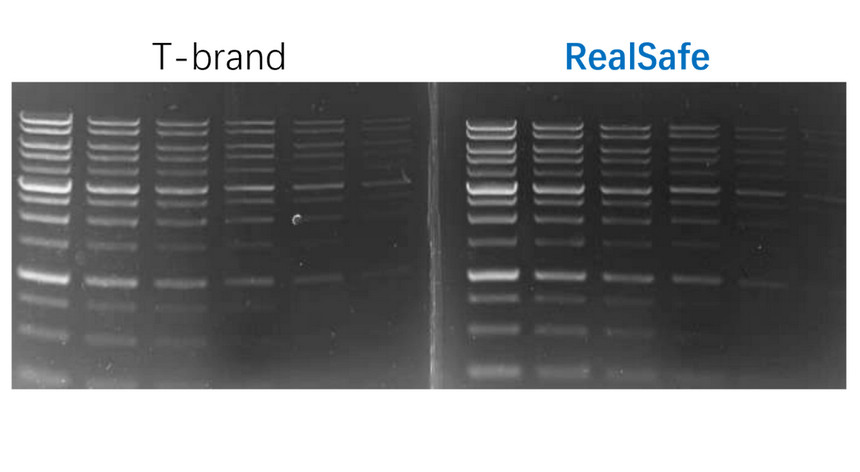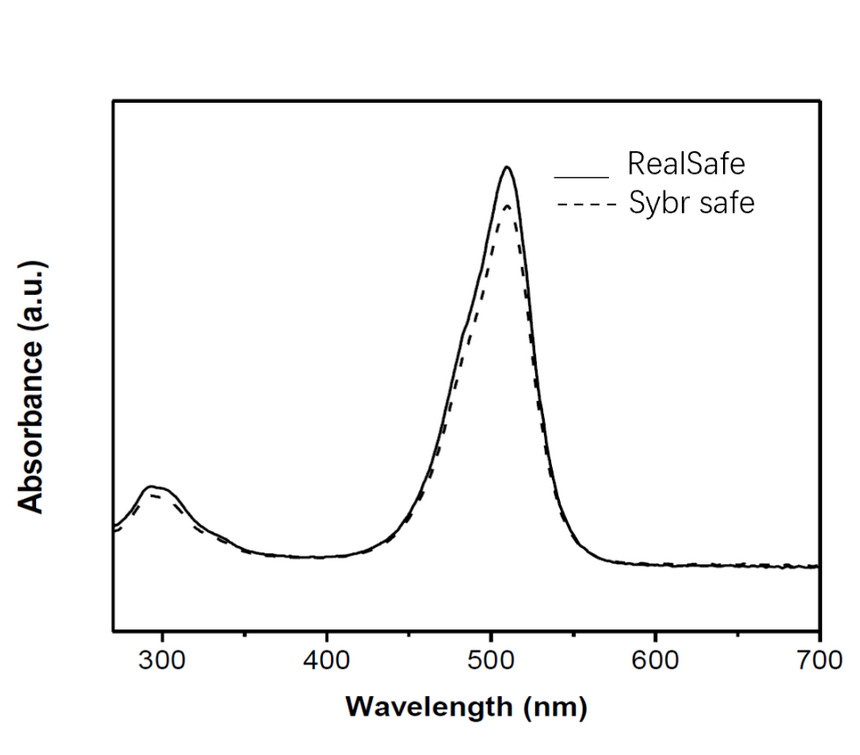Features
- One Used for detecting DNA and RNA.
- Alternative to the ethidium bromide staining.
- As sensitibe as EtBr or more sensitive than that.
- Non-toxic, non-mutagenic and non-carcinogenic.
- No hazard waste.
| RealSafe Nucleic Acid Gel Stain | Package |
|---|---|
| 10,000X in DMSO | 1 mL |
Protocol
- Staining nucleic acids after electrophoresis:
- Working solution preparation:Dilute GEL-SAFE 10,000X solutionin TAE or TBE buffer prior to use.
- Place the gel in a plastic container, do not use a glass container, because the dye in the staining solution may adsorb to the walls of the container, resulting in poor gel staining. Add sufficient diluted GEL-SAFE solutionto cover the gel, and ensure that the gel is fully immersed during staining.
- Incubate for 30 minutes. Cover the gel and the staining solution with aluminum foil or place them in the dark to protect from light. Continuously agitate the gel on an orbital shaker at 50 rpm. No destaining is required.
- Precasting GEL-SAFE stain in agarose gels:
- Prepare 100 mL of agarose gel solution (concentration from 0.8-3.0%) and heat until the solution is completely clear and no small floating particles are visible.
- Add 10 μL of GEL-SAFE DNA Stain to the gel solution and mix it gently.
- Cool the gel to 50-60ºC and cast the gel, into the gel tray.
- When the gel is solid, load the samples and perform electrophoresis.
- No post-staining or destaining is needed.
Note: The mobility of nucleic acid fragments in the gel may be somewhat slower when run in these gels compared to their mobility in the gel without stain. - Viewing and photographing the gel:
- You can view stained gels using a standard 280~300nm UV illuminator.
Precautions
- GEL-SAFE is dissolved in DMSO, which may freezeat low temperatures; therefore, the product must be completely thawed and mixed before using.
- 2. Repeated freeze-thawing has minimal impact on productproperties, however, but excessive repeated freezing and thawing (more than 10 times) is still not recommended.


